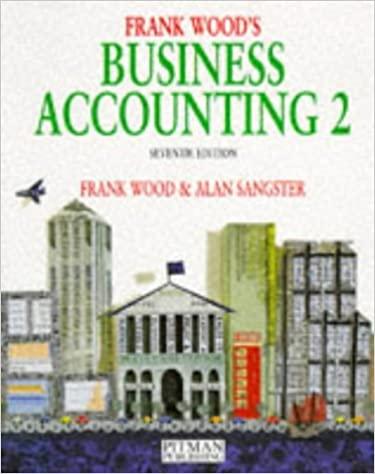Question
please give your own sentences 7.Blockchain is one of the most important technical invention in the recent years. Blockchain is a transparent money exchange system
please give your own sentences
7.Blockchain is one of the most important technical invention in the recent years. Blockchain is a transparent money exchange system that has transformed the way a business is conducted. Companies and tech giants have started investing significantly in the blockchain market and it is expected to be net worth of more than 3 trillion dollars in next 5 years. It has become growing popular because of its irrefutable security and ability to provide complete solution to digital identity issues. It is a digital ledger in a peer to peer network. This paper provides a background on Blockchain technology, history, it's architecture, how it works, advantages and disadvantages and its application in different industries.
8.The banking and financial-services industry has taken notice of blockchain technology's many advantages. This special issue explores its unlikely origins, tremendous impact, implementation challenges, and enormous potential.
9.Blockchain refers to a range of general purpose technologies to exchange information and transact digital assets in distributed networks. The core question addressed in this paper is whether blockchain technology will lead to innovation and transformation of governmental processes. To address this question we present a critical assessment of the often exaggerated benefits of blockchain technology found in the literature and discuss their implications for governmental organizations and processes. We plea for a shift from a technology-driven to need-driven approach in which blockchain applications are customized to ensure a fit with requirements of administrative processes and in which the administrative processes are changed to benefit from the technology. Having sound governance models are found to be a condition for realizing benefits. Based on a critical assessment we offer directions for further research into the potential benefits of BC applications in e-government and the role of governance of BC architectures and applications to comply with societal needs and public values.
10.The digitalization phenomenon is leveraging new relationship models through the entire supply chain network. In this outlook, blockchain is a cutting-edge technology that is already transforming and remodeling the relationships between all members of logistics and supply chain systems. Yet, while studies on blockchain have gained a relative pace over the recent years, the literature on this topic does not report sufficient research cases on blockchain adoption behavior at the individual level. The present study, therefore, aims to bridge this gap, notably by helping understand the individual blockchain adoption behavior in the logistics and supply chain field in India and the USA. Drawing on the emerging literature on blockchain, supply chain and network theory, as well as on technology acceptance models (TAMs), we have developed a model based on a slightly-altered version of the classical unified theory of acceptance and use of technology (UTAUT). The model being developed was then estimated using the Partial least squares structural equation modeling (PLS-SEM). As the model was eventually supported, the results obtained revealed the existence of distinct adoption behaviors between India-based and USA-based professionals. In parallel, the findings appear as a useful contribution to and a sign of progress for the literature on IT adoption, SCM, and blockchain.
11.Blockchain is an emerging decentralized architecture and distributed computing paradigm and has recently attracted intensive attention from all sectors of society. This paper sets up a theoretical model to analyze a new credit pattern that allows small and medium-sized enterprises (SMEs) assessing bank loans through the blochchain technology. Theoretical analysis demonstrates that the blockchain technology enables the decentralized consensus recording of success of debt repayment or debt default rendered by verifying and validating certain lending and borrowing activities in distributed ledgers. In the newly proposed blockchain embedded credit system, SMEs with low-risk and high-quality could display their credibility and risk class through information distribution. They are more likely to access bank loans even if they are not able to provide collateral. Results derived from the theoretical model present two main findings. First, the alleviation of information asymmetry and credit rationing problems can be achieved through decentralized consensus and information distribution among all participants. Second, the risk sharing mechanism involving government, banks and firms, will not only make the establishment of such an innovative system possible, but also create risk pool for the blockchain based lending and borrowing.
Step by Step Solution
There are 3 Steps involved in it
Step: 1

Get Instant Access to Expert-Tailored Solutions
See step-by-step solutions with expert insights and AI powered tools for academic success
Step: 2

Step: 3

Ace Your Homework with AI
Get the answers you need in no time with our AI-driven, step-by-step assistance
Get Started


